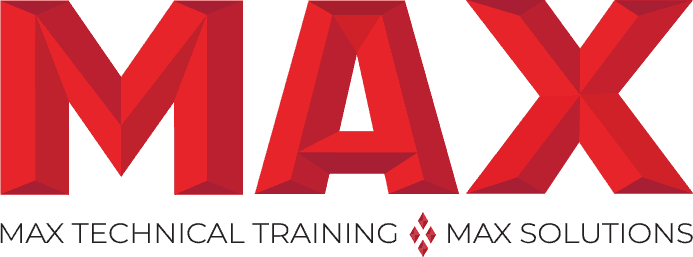04/08/2024
Share This Story, Choose Your Platform!

What Is a Common Misconception About Agile and DevOps?
Are you a beginner in the tech world with only a few coding classes under your belt? If you’ve heard of Agile and DevOps but aren’t quite sure what they are, you’re not alone. Despite being widely used throughout the industry, these terms are often misunderstood. That’s why we’re here to set the record straight. In this article, we’ll answer the question, What is a common misconception about Agile and DevOps?
What Is a Common Misconception About Agile and DevOps?
A common misconception about Agile and DevOps is that they are interchangeable or identical concepts. While they are related and often work together, they serve different purposes and focus on different aspects of software development and delivery. To understand the truth behind this misconception, we need to understand what Agile and DevOps are and what the differences are between them.
What is Agile?
Agile is a software development methodology or approach that prioritizes flexibility, adaptability, collaboration, and delivering value to customers through iterative development cycles. It emerged as a response to traditional waterfall methodologies, which followed a linear, sequential software development process.

Key principles of Agile include:
- Iterative and Incremental Development: Agile projects are divided into small, manageable increments called iterations or sprints, typically lasting 1-4 weeks. Each iteration results in a potentially shippable product increment, allowing for continuous feedback and improvement.
- Customer Collaboration: Agile emphasizes close collaboration between development teams and customers or stakeholders throughout the project. Customer feedback is solicited early and frequently to ensure that the product meets customer needs and expectations.
- Adaptive Planning: Agile projects embrace change and uncertainty, allowing requirements and priorities to evolve over time. Teams focus on delivering the highest priority features first and adapt their plans and priorities based on feedback and changing market conditions.
- Self-Organizing Teams: Agile teams are cross-functional and self-organizing, meaning they have the autonomy to determine how best to achieve their goals. Team members collaborate closely, share responsibilities, and make collective decisions to deliver high-quality software.
- Continuous Improvement: Agile encourages a culture of continuous learning and improvement. Teams regularly reflect on their processes, identify areas for improvement, and make adjustments to increase efficiency, quality, and customer satisfaction.
Popular Agile methodologies include Scrum, Kanban, Extreme Programming (XP), and Lean Software Development. Each methodology offers a unique framework and set of practices for implementing Agile principles effectively.
Overall, Agile methodologies enable teams to respond quickly to changing requirements, minimize risks, and deliver valuable software iteratively, ultimately leading to better customer satisfaction and business outcomes.
What is DevOps?
DevOps is a set of practices, cultural philosophies, and tools to improve collaboration, communication, and integration between software development (Dev) and information technology operations (Ops) teams. The primary goal of DevOps is to shorten the software development lifecycle, increase the frequency of software releases, and deliver high-quality software more rapidly and reliably.

Key principles and practices of DevOps include:
- Automation: Automating repetitive tasks such as code builds, testing, and deployment to accelerate the software delivery process and reduce manual errors.
- Continuous Integration (CI): Integrating code changes into a shared repository frequently, typically multiple times a day. CI ensures that code changes are tested and verified automatically, enabling early detection of integration errors.
- Continuous Delivery (CD): Extending CI to automatically deploy code changes to production or staging environments after passing automated tests. Continuous Delivery ensures that software can be released to customers quickly and reliably at any time.
- Infrastructure as Code (IaC): Managing and provisioning infrastructure (servers, networks, and storage) using code and automation tools. IaC enables consistent, reproducible infrastructure deployments and facilitates scalability and agility.
- Monitoring and Logging: Implementing monitoring and logging solutions to gain visibility into application performance, detect issues proactively, and troubleshoot problems quickly.
- Collaboration and Communication: Fostering a culture of collaboration and shared responsibility between development and operations teams. DevOps emphasizes breaking down silos, encouraging cross-functional teams, and promoting open communication and knowledge sharing.
- Microservices and Containerization: Adopting architectural patterns such as microservices and containerization (e.g., Docker) to build and deploy applications in small, independently deployable units. These practices improve scalability, flexibility, and resource utilization.
- Feedback Loops: Establishing feedback loops throughout the software delivery pipeline to gather insights, measure performance, and continuously improve processes and outcomes.
DevOps is not just about implementing specific tools or practices but also involves cultural and organizational changes. Successful DevOps adoption requires a mindset shift, collaboration, and commitment to continuous improvement across the entire organization. By embracing DevOps principles and practices, businesses can accelerate innovation, deliver better products, and remain competitive in today’s fast-paced digital landscape.
The Differences Between DevOps and Agile

While DevOps and Agile share some common principles and goals, they are distinct concepts with different focuses and scopes. Here are the key differences between DevOps and Agile:
Scope:
- Agile: Agile is primarily focused on the software development process itself. It emphasizes iterative development, customer collaboration, and responding to change through flexible planning and incremental delivery.
- DevOps: DevOps extends beyond development to encompass the entire software delivery lifecycle, including development, testing, deployment, and operations. DevOps aims to bridge the gap between development (Dev) and operations (Ops) teams to ensure smooth and efficient software delivery and operation.
Objectives:
- Agile: The main objective of Agile is to deliver high-quality software that meets customer needs and expectations through iterative development cycles. Agile emphasizes collaboration, adaptability, and delivering value to customers early and frequently.
- DevOps: DevOps aims to improve collaboration, communication, and integration between development and operations teams to streamline the software delivery process. Its primary objectives include increasing the speed, reliability, and frequency of software releases and enhancing overall operational efficiency and stability.
Focus:
- Agile: Agile focuses on the development process, team dynamics, and delivering software features iteratively. It provides frameworks and methodologies (e.g., Scrum, Kanban) for managing and organizing development efforts.
- DevOps: DevOps focuses on automating and optimizing the entire software delivery pipeline, from code commit to production deployment and operation. DevOps emphasizes infrastructure as code, continuous integration/continuous delivery (CI/CD), automation, and collaboration between development and operations teams.
Culture and Practices:
- Agile: Agile promotes a culture of collaboration, transparency, and continuous improvement within development teams. It emphasizes practices such as daily stand-up meetings, sprint planning, retrospectives, and frequent customer feedback.
- DevOps: DevOps promotes a culture of collaboration, shared responsibility, and continuous learning across development and operations teams. DevOps practices include infrastructure automation, version control, configuration management, monitoring, and incident response.
Timing and Lifecycle:
- Agile: Agile focuses on the development phase of the software lifecycle, from requirements gathering to software delivery.
- DevOps: DevOps spans the entire software delivery lifecycle, including development, testing, deployment, and ongoing operation and maintenance.
While Agile and DevOps are complementary and often implemented together, understanding their distinct focuses and objectives is essential to effectively adopting and integrating these practices within an organization.
Conclusion: What Is a Common Misconception About Agile and DevOps?
In conclusion, it’s clear that Agile and DevOps are two essential frameworks reshaping the landscape of software development and delivery. However, misconceptions about their interchangeability persist, hindering many from fully leveraging their potential. Agile emphasizes iterative development and customer collaboration, while DevOps extends this focus to encompass the entire software delivery lifecycle, promoting seamless integration between development and operations teams.
To truly grasp the power and potential of Agile and DevOps, it’s crucial to delve deeper into their principles and practices. Max Technical Training offers comprehensive training courses designed to equip beginners and seasoned professionals alike with the knowledge and skills needed to thrive in today’s tech-driven world. By enrolling in a Max Technical training course, you’ll gain valuable insights, practical experience, and industry-recognized certifications, empowering you to drive innovation, enhance collaboration, and deliver exceptional software solutions.
Don’t let misconceptions hold you back. Explore Max Technical’s training offerings today to take the first step towards mastering Agile and DevOps. Embrace the future of software development and position yourself for success in an ever-evolving digital landscape. Your journey to excellence starts here.
Read More Articles From MaxTrain Technical Training
Visualising Linear Mixed Effects Model Python Basics
Visualising Linear Mixed Effects Model Python Basics At Max Technical Training, we believe in empowering individuals with the skills they need to excel in today's competitive tech landscape. One crucial skill for data scientists and [...]
Python: How to Solve the Error: Subprocess-Exited-With-Error
Python: How to Solve the Error: Subprocess-Exited-With-Error In the intricate world of software development, encountering errors is par for the course. However, one error that often leaves developers scratching their heads is the error: subprocess-exited-with-error. [...]
Understanding Software Development Roles and Responsibilities
Understanding Software Development Roles and Responsibilities Welcome to Max Technical Training's guide to software development roles! In the ever-evolving world of technology, mastering software development skills opens doors to a variety of exciting careers. At [...]
Scrum: Who Determines How Work Is Performed During the Sprint?
Scrum: Who Determines How Work Is Performed During the Sprint? Welcome to Max Technical Training, the premier destination for professionals eager to excel in Scrum and Agile methodology. If you want to deepen your understanding [...]
What is the Purpose of Iteration Goals?
What is the Purpose of Iteration Goals? Welcome to the world of Agile methodologies, where adaptability, collaboration, and continuous improvement reign supreme. At Max Technical Training, we know that understanding Agile practices is pivotal for [...]
The Skills You Need for Google Security Jobs
The Skills You Need for Google Security Jobs In today's dynamic tech landscape, security skills stand as the cornerstone of digital protection against ever-evolving cyber threats. As cyber-attacks grow in sophistication, the demand for proficient [...]









